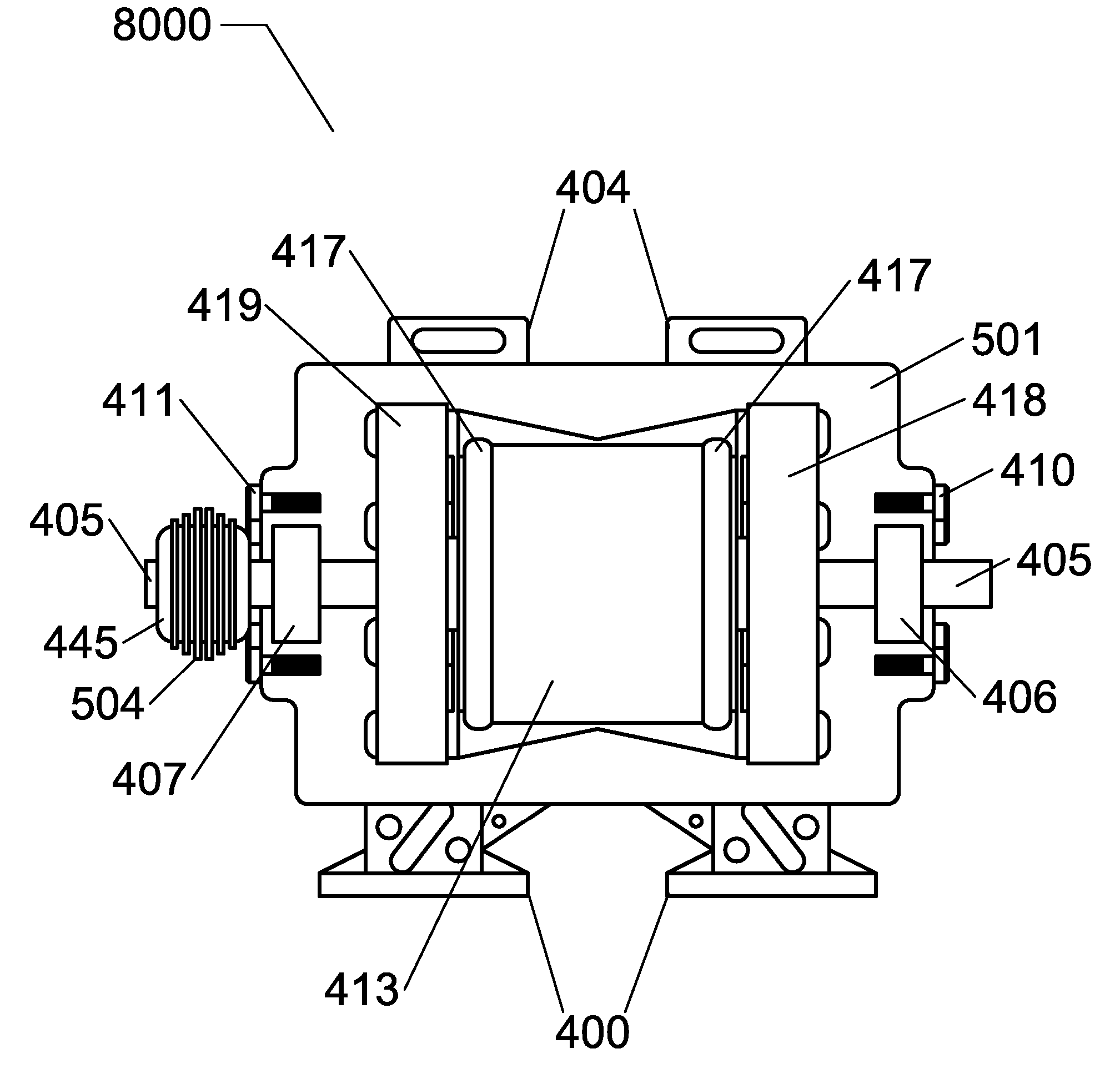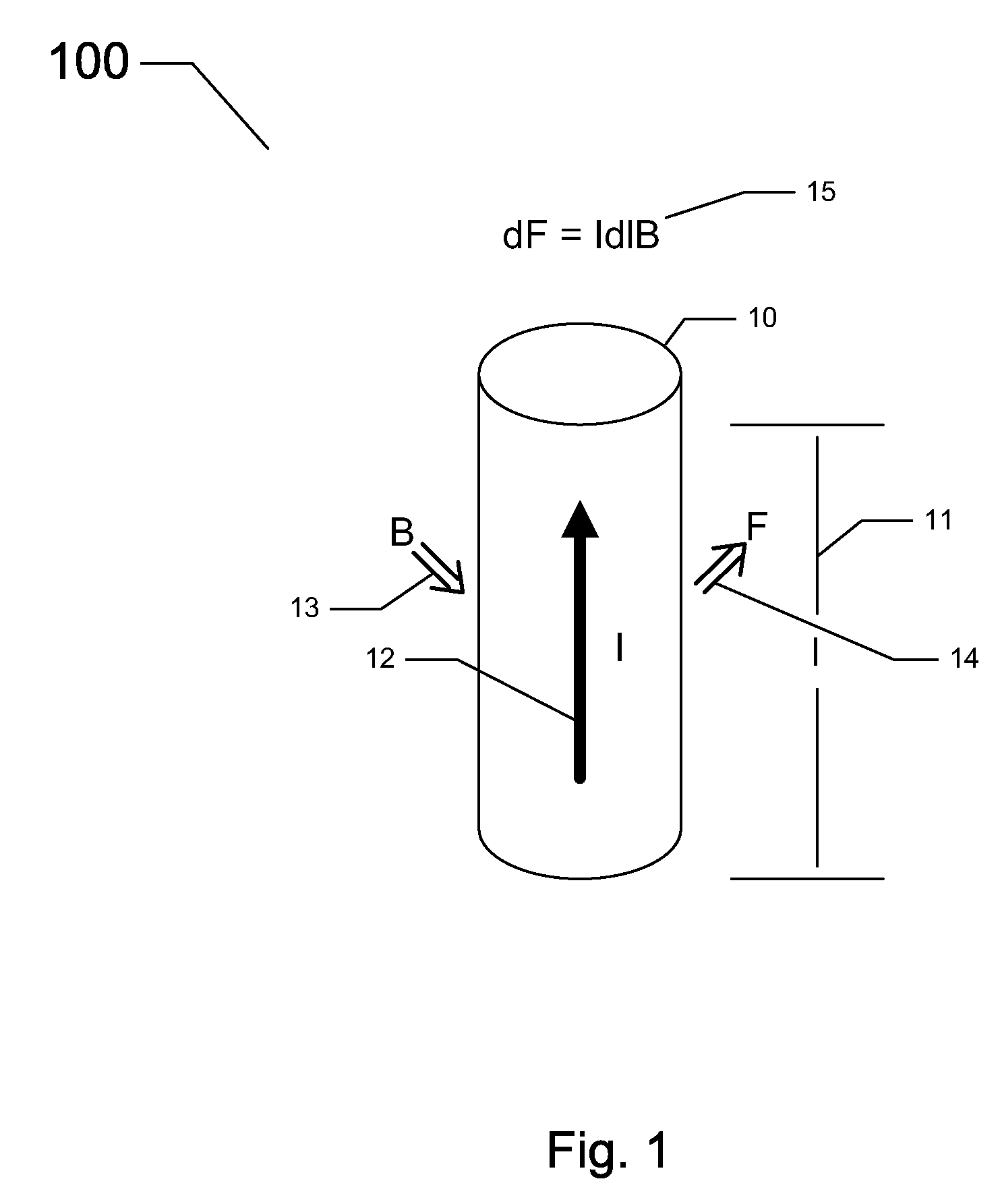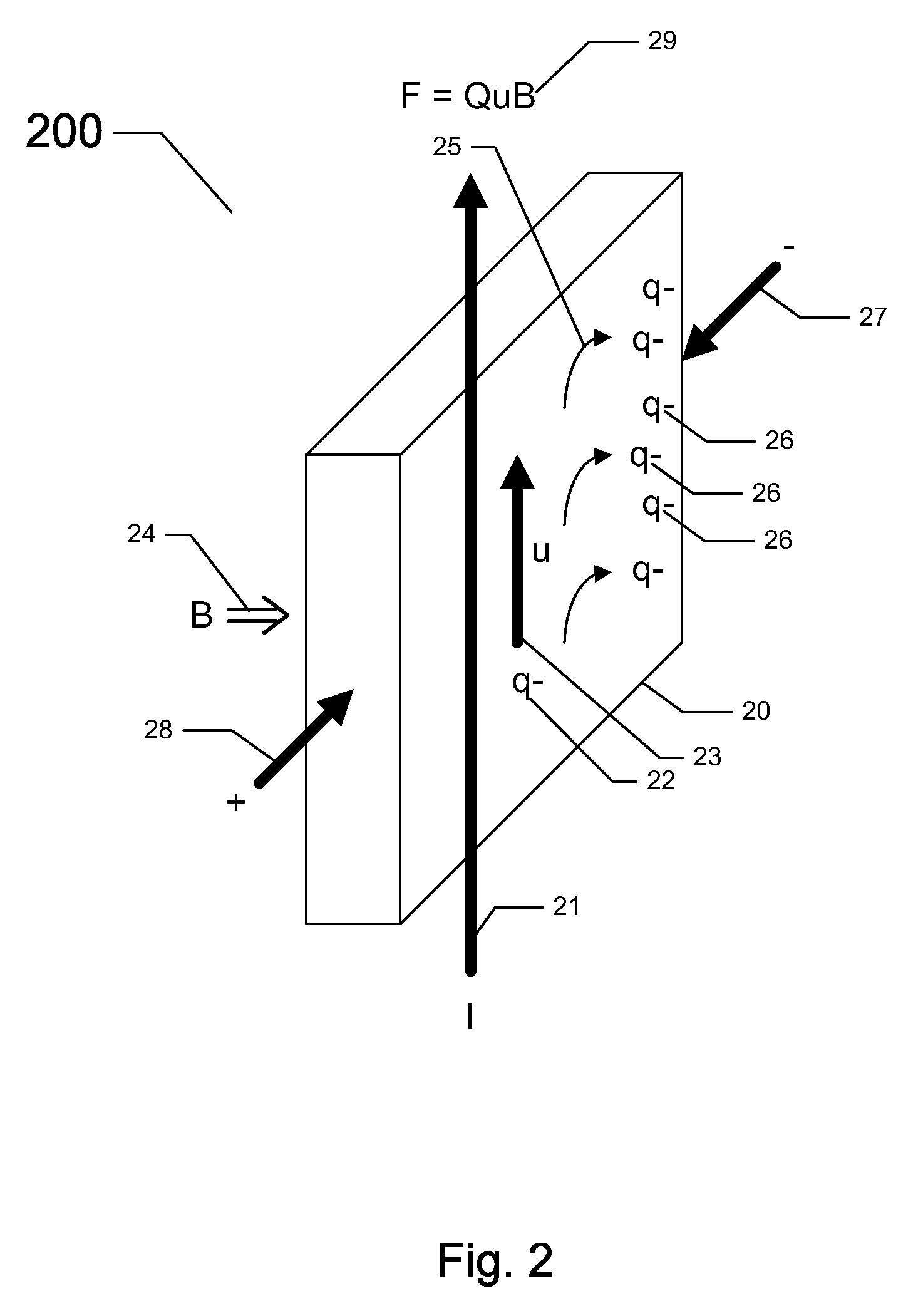Superconducting Acyclic Homopolar Electromechanical Power Converter
a technology of electromechanical power converter and superconducting magnet, which is applied in the direction of superconducting magnets/coils, magnetic circuit rotating parts, and shape/form/construction of magnetic circuits, etc. it can solve the problems of lack of interest, not being investigated or pursued, and not being relevant whether the cyclic apparatus is cyclic, so as to reduce the physical dimensions, and reduce the large i2r losses
- Summary
- Abstract
- Description
- Claims
- Application Information
AI Technical Summary
Problems solved by technology
Method used
Image
Examples
Embodiment Construction
[0085] For a general understanding of the present invention, reference is made to the drawings. In the drawings, like reference numerals have been used throughout to designate identical elements.
Overview of Electrodynamic Concepts
[0086] A brief overview of electrodynamic concepts is presented here to fully enable one skilled in the art to make and use the invention.
[0087] Shown in FIG. 1 is an illustration of the classical electrodynamic concept of current flow produced magnetomotive force (MMF) over the length of a conductive element located within a uniform perpendicularly applied magnetic field. In this figure, there is a conductive element 10, of length “l”11, said conductive element 10 having a current flow “I”12 therein along its length “l”11, and being situated in a uniform externally applied magnetic (B) field 13. The current flow “I”12 (which is due to a current density J comprised of moving charge carriers, nominally q- or electrons in this case) experiences a net forc...
PUM
 Login to View More
Login to View More Abstract
Description
Claims
Application Information
 Login to View More
Login to View More - R&D
- Intellectual Property
- Life Sciences
- Materials
- Tech Scout
- Unparalleled Data Quality
- Higher Quality Content
- 60% Fewer Hallucinations
Browse by: Latest US Patents, China's latest patents, Technical Efficacy Thesaurus, Application Domain, Technology Topic, Popular Technical Reports.
© 2025 PatSnap. All rights reserved.Legal|Privacy policy|Modern Slavery Act Transparency Statement|Sitemap|About US| Contact US: help@patsnap.com



